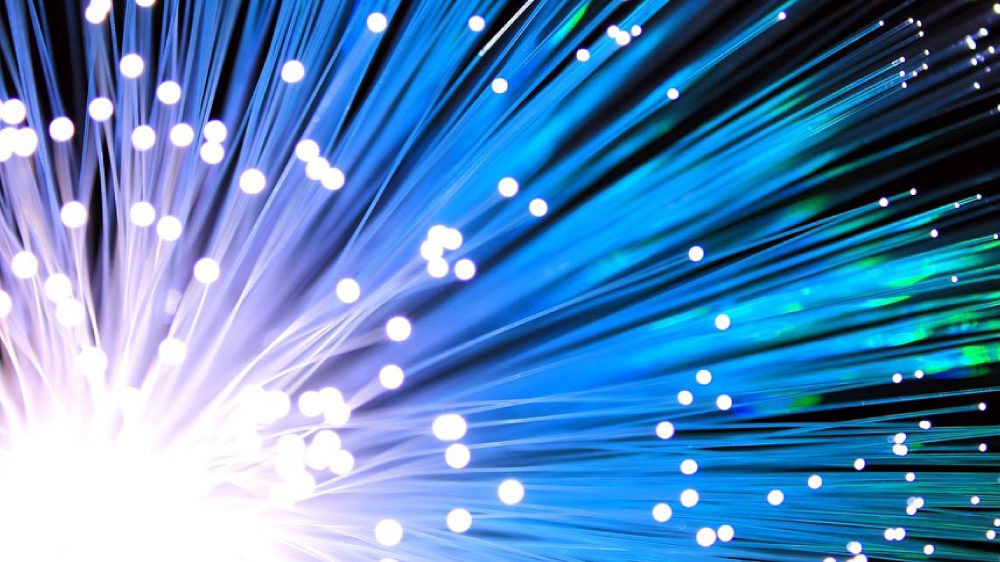Faster networking through fibre optics
By EPR Magazine Editorial January 7, 2019 2:41 pm IST
By EPR Magazine Editorial January 7, 2019 2:41 pm IST

Here is an exclusive report by the industry bigwigs, sharing their thoughts on the benefits and challenges of optic fibre cable in Smart Cities.
Fibre optic cables are the cleanest and fastest wide-area network available right now, and it can offer the highest capacity of any production network connection. In telecommunications, fibre optic technology has virtually replaced copper wire in long-distance telephone lines, and it is used to link computers within local area networks.
Optic fibre cables: What’s so special?
Fibre has been used in local area networking (LAN) and internet connectivity for decades, and it’s an integral part of our global network. Despite this, fibre hadn’t gained a lot of traction for wide-area networking (WAN) until recently.
Data traffic in India is set to triple over the next five years, according to Randeep Narang, President – International (T&D, Solar) & Cables, KEC International Ltd, on account of higher number of connected devices, reliable and affordable high-speed data and proliferation of digital content.
“Wireless platforms infrastructure will not be able to keep speed with the exponential growth in data consumption and advent of new technologies such as 5G due to constraints such as spectrum availability and coverage issues,” Narang said.
He asserts that optic fibre network offers a cost efficient and reliable medium for carrying high amount of data over long distances. “Optic fibre cables coupled with wireless will ensure economic growth and improved quality of life in remote and rural areas,” he adds.
Enhanced connectivity will lead to better management of primary infrastructure facilities such as traffic, healthcare, security and power, claims Narang. Internet economy is expected to grow to about 7.5 per cent of the country’s GDP by 2020 and optical fibre cables will play an important role in its development.
Meanwhile, Abhinandan Sharma, Sr. Vice President, Citadel Intelligent Systems Ltd, says, “When we talk of economic development, it includes financial inclusion, faster clearances, easy access to funds, global connect etc. While government policies are the major drivers, physical connectivity is the platform. If we map economic development with connectivity, we can see a positive correlation between the two.”
Sharma believes that fibre has proved to be revolutionary force in transforming how connectivity was perceived. “Traditionally copper based connectivity was used for connectivity and there was a time when it worked well. But copper-based technologies have their drawbacks like attenuation, weight and electromagnetic interferences. With everything inter-connected, and gigabytes of data flowing around, we need a fool-proof media to support all our data requirements. Fibre offered the solution for the same. It provides a low attenuation, low weight, and interference free media which could carry data for long distances without any major data loss,” he adds.
Key challenges in deploying fibre infrastructure in Smart CitiesNarang states that one of the major challenges with this technology is the lack of common duct infrastructure in cities, which can be shared across multiple players. The installation and maintenance of fibre infrastructure within cities entails high costs per km of laying. In addition, it leads to huge inconvenience for the city residents due to digging of roads, if executed without proper coordination.
However, Sharma claims that the major challenges of fibre infrastructure deployment in Smart Cities are ROW, be it getting clearances, cost or deployment hassles, there’s no respite in sight. “Telecom industry as a whole has been escalating these issues time and again and government has also acknowledged the same but there’s no concrete solution put forward till now. While as per recent TRAI papers, several steps have been taken to expedite clearances and reduce formalities, still on ground situation hasn’t changed much. Also, exorbitant charges per meter are making projects unviable. Further building these networks requires competent contractors who understand fibre optics and the best installation practices are followed for long term sustainability on the networks,” Sharma concludes.
Enhanced connectivity will lead to better management of primary infrastructure facilities such as traffic, healthcare, security and power
Randeep Narang, President – International (T&D, Solar) & Cables, KEC International Ltd
Few of the top demand are Digital India, High-Speed Broadband become essential utility for everyone, need for fiberisation of backhaul network etc
Ashish D Jain, President and Business Head (Telecom), Polycab India Limited
When we talk of economic development, it includes financial inclusion, faster clearances, easy access to funds, global connect etc
Abhinandan Sharma, Sr. Vice President, Citadel Intelligent Systems Ltd
We use cookies to personalize your experience. By continuing to visit this website you agree to our Terms & Conditions, Privacy Policy and Cookie Policy.